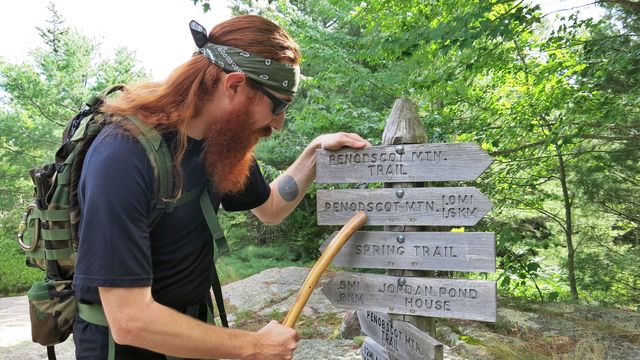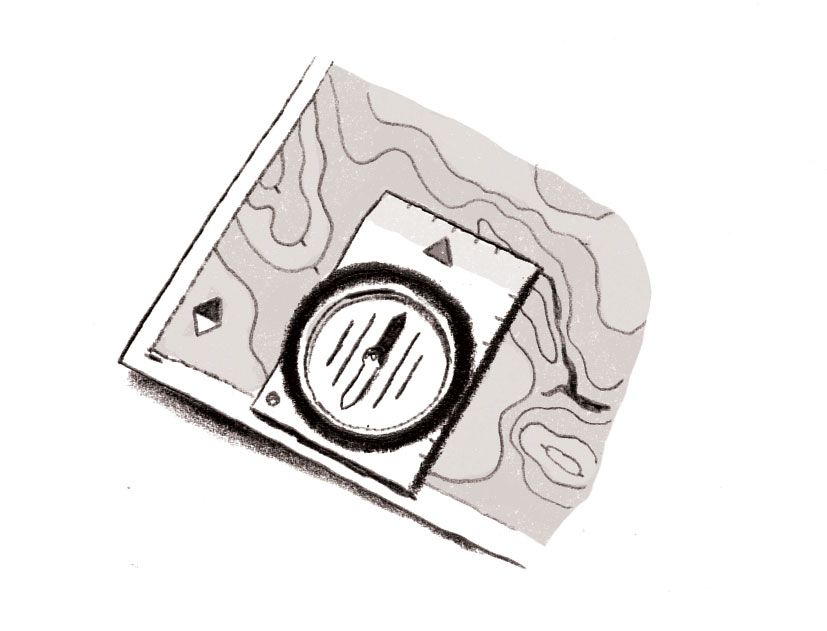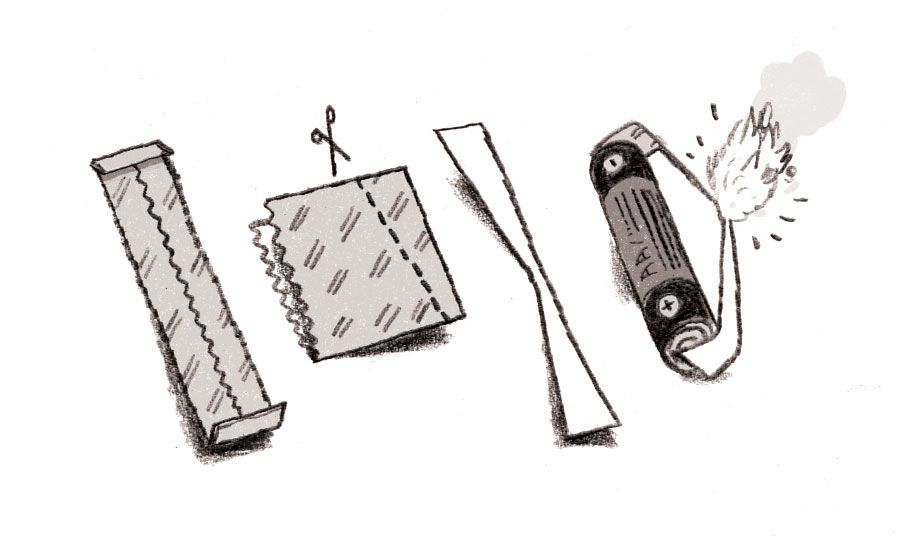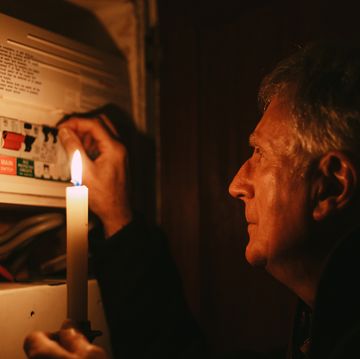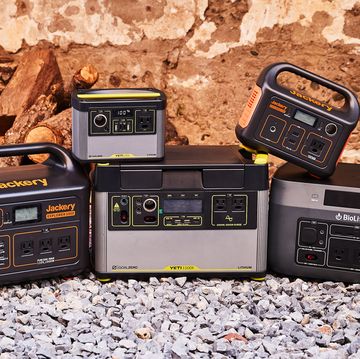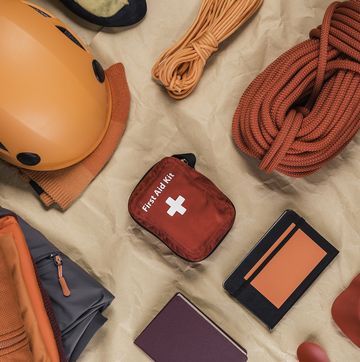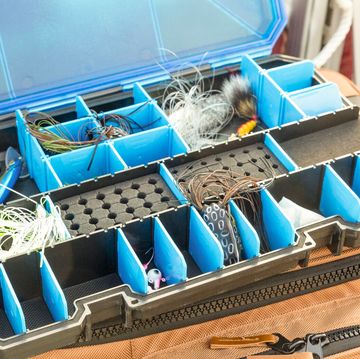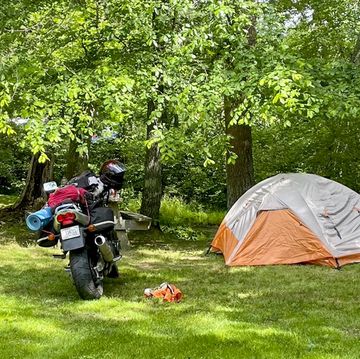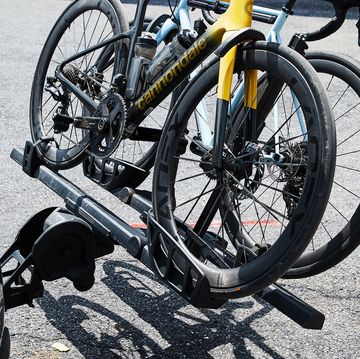How To Signal for Help
"If you have a whistle, use a one-two-three, pause, one-two-three pattern. This is more recognizable to the human ear. Mirrors are also important. Nothing in nature can be mistaken for a signal mirror. Same goes for brightly colored construction tape." — Thomas Coyne, found and chief instructor, Survival Training School of California
How To Orient a Map
Align north on your compass with the map's vertical grid lines. Rotate the map and compass together until the needle reaches north.
How To Turn Your Car Into a Generator
Car electricity runs on direct current, but almost everything else is alternating current. What you need: an inverter. Some cars have them built in, but you can get one at a store for less than $40. Use the clamps to attach the inverter directly to the terminals on your car battery. Let the car run at idle and you have 110-volt AC power for as long as you have gas. With a 300-watt inverter, you'll have enough amps to run a laptop or even a television.
How To Make Fire With a Gum Wrapper and AA Battery
1. Fold an open wrapper in half, width-wise.
2. Fully cut diagonally from the open side to almost the edge on the folded side. Unfolded, the two ends should be wide triangles and the connecting portion as narrow as possible.
3. Hold the foil side of each end on opposite terminals of the battery. The middle section will burst into flames. Have tinder ready.
How To Swim a Long Distance in Freezing Water
Kimberley Chambers, open-water swimmer and the sixth person to ever complete the Ocean's Seven marathon challenge.
Breathe: You must control your breathing and relax—even when the freezing water makes it feel like there's a foot on your chest. Panicking wastes energy.
Keep moving: Even if you think you are not making any progress. As soon as you stop, you lose precious body heat.
Flex your hands: An early sign of hypothermia: claw hands. You can last a long time after this, so flex your fingers closed after each stroke to get blood flowing again.
How To Barricade Your Home From the Inside
When bands of marauders start roaming the streets, how are you going to keep them out? Tear down a few walls, says Timothy Ferraro, a twenty-five-year construction veteran who's thought about this situation plenty while watching The Walking Dead. "Assuming the attackers don't have a battering ram, you should be able to keep them out using the lumber and drywall already in your home," he says.
1. Cut your window covers
Pick a bedroom, closet, or hallway partition wall. Use a utility knife or handsaw to cut out window-size slabs of drywall. It's stronger than you think, especially if you double or triple it up.
2. Yank the studs
Inside every wall is a stockpile of lumber you can use to fortify your entry points. Using a hammer, bat, or shovel, knock the studs loose from the bottom plate on the base 2 x 4, and then yank them free from the top.
3. Lock down the entry points
Nail your studs together in lengthwise pairs at a 90-degree angle to form braces. This makes them stronger. Then run three or four braces horizontally across every door, hammering the nails from above and below directly into the frame at a 45-degree angle. If you drive them straight in, they're easier to pop out when somebody kicks the door. Use more braces to secure the drywall over the windows. Try to use longer nails and leave a couple inches of each nailhead sticking out for easy removal. — Clint Carter
How to Prepare for Wildfire Season
Before fire season, move combustibles away from your house. Fences and dry vegetation give fires a place to grow, says Jonathan Cox at Cal Fire, California’s Department of Forestry and Fire Protection. Hosing down your house won’t help much, either, he says: “The way a lot of these homes burn is through something called ember cast, when embers from the fire fly over and drop little fires everywhere. With a huge ember cast, hosing down your house doesn’t do much.”
If the fire is around you and you can’t escape, you don’t have many options, says Shane Hobel of the Mountain Scout Survival School. If there’s a pool or a pond nearby, jump in and try to wait it out there. Otherwise, if you have time, dig a trench that’s two to three feet deep and long enough for you to lie in. Soak a blanket in water, wrap it around yourself, and lie down in the trench. It’s risky, but at least you’ll have a chance.
What To Do If Your Feet Are Cold and Wet
Take off your shoes, put a plastic bag on each foot, and then put your feet back in your shoes, Hobel says. The plastic will capture the heat your body generates. Yes, your feet will still be wet. And yes, your feet will sweat in the plastic. But they’ll be warm.
What To Do If You Lost Your Can Opener
Most canned goods consist of a 1/16-inch piece of tin sealed over the top of a thicker can. Find a brick and aggressively rub it back and forth on the rim of a can, Hobel says. The brick works like sandpaper, and the top will open.
What To Do If Your Home Was Destroyed and Evacuation Is Not an Option
According to Hobel, shelter is your first priority. Lay down cardboard and other materials to insulate yourself from the ground. (Even in summer, the ground can have temperatures that lead to hypothermic conditions.) Use tarps, blankets, pillows—whatever you can find—to build the shelter on that layer. It should be as low to the ground as possible, and you shouldn’t be able to sit up when you’re inside, Hobel says. Other than the airflow you need to breathe, block all openings to keep cold air from coming in. It’s a matter of conserving heat. A lot of people don’t realize that their bodies are heat sources, Hobel says. You’re almost 100 degrees. Trap that heat around you instead of letting it rise in a tall shelter, and you won’t need a fire to stay warm.
How to Make Clean Water
Even if sewage and water-delivery systems are down, there’s often plenty of water available. Look in buildings’ plumbing systems, Hobel says. Potable water will be trapped in the pipes, so see if you can locate the release valve. If you can’t find safe water, Hobel suggests making the following simple filter:
1. Burn a fire. When the ashes are cool, grind down the resulting charcoal until it’s a powder. The grains should feel like confectioners’ sugar. (Don’t use charcoal from someone else’s fire. You don’t know if they burned a poisonous plant. They also might have peed on it to put it out.)
2. Find some sort of receptacle. An old plastic water bottle will do. Cut off the bottom of the bottle, then use a nail to poke a hole in the cap and screw the cap on the top of the bottle. Turn the bottle upside down. Add a few inches of powdered charcoal to the bottle, then add water.
3. The water will slowly filter through the charcoal and drip out of the cap. Put a bandanna or another cloth over the hole to filter out any bits of charcoal. (If you’re experiencing intestinal distress—and you very well might be, since your body goes into different kinds of shock in these situations—eat a little bit of the charcoal. It’ll help bind you back up.)
Tip: How to Be a Reasonable Prepper:
When I started putting together my first survival kit, I just collected whatever weird stuff I could find—like tablets that would protect my thyroid from nuclear fallout. My mindset changed when my first daughter was born. I realized I needed a more practical end-of-the-world plan, with equipment that would be useful for things that might actually happen. Nuclear war is probably not in store for 2018, and if it is, I’ll just open a window. I don’t want to live through that.
There are two scenarios everyone—prepper or not—should count on: losing power and being stranded in your car. I’m a big believer in backup power. I keep an emergency power supply plugged into an outlet in my apartment; it has a trickle charger so I can forget about it until my block goes dark. In my car, I keep extra blankets, a LifeStraw portable water filter, lighters, and Millennium energy bars. It’s not the Four Seasons, but at least my family will be able to survive 48 hours in our Honda Pilot. One thing to consider: You need to be with your gear when a disaster strikes. When Sandy hit in 2012, our whole family was in Connecticut while all my gear was in Manhattan. My wife had a good laugh. These days, my everyday bag is a waterproof Showers Pass backpack where I stash a small set of screwdrivers, multitool, glass breaker, three flashlights that use the same type of batteries, and a spool of Kevlar thread, all sorted in plastic bags. There’s a spoon and fork in there, too, because if I have to eat an MRE for dinner, I might as well look civilized while I do it.—Wylie Dufresne, Michelin-starred Chef, Owner Of Du’s Donuts, Prepper
